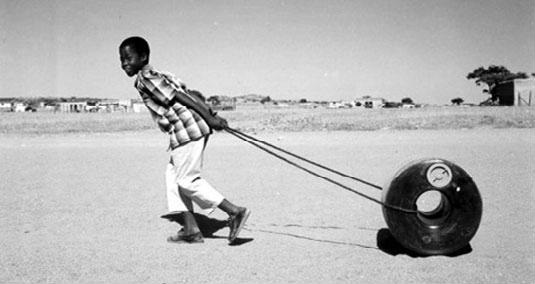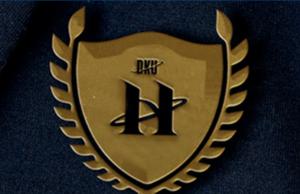 |
| ▲ The Q-Drum |
Have you heard about the project called Design for the Other 90%? Recently, this program created to help people in need, has attracted attention from all over the world. Their progams include the development of a product called lifestraw, which changes any water into clean drinking water. Q Drum, a water drum that can be easily rolled along the ground, eliminating the need to carry heavy water bottles long distances from the water source to a persons home, and sugarcane charcoal which is a more environment-friendly fuel source alternative to wood charcoal. The designs have little relation to what we generally think of as the goal of design. Instead of establishing trends, these designs are focused on functionality and are meant to help alleviate the suffering of people in need, protect the environment and ultimately save lives. Design for the Other 90% is working to eliminate poverty and provide opportunities for people around the globe. The designs are being developed and used worldwide.
The Dankook Herald (DKH) looked into some of the products developed under the Design for the Other 90% project. First we looked at the lifestraw, a small compressed and portable water purifier created by the designer, Torben Vestergaard Frandsen. It was invented for the poor from Ghana, Pakistan and Uganda who frequently suffer from waterborne diseases. It is portable water purifier that turns any water into potable water and as a result saves its users from illnesses such as typhoid, cholera, dysentery, and diarrhea. It is capable of removing particles as small as 15 microns.
Next, we looked at Q-Drum, which is a large donut shaped portable water bottle. Q-Drum was invented by P.J. Hendrikes and P.S. Hendrikes, for the people of Angola, Kenya, Rwanda, Namibia, Ethiopia, Tanzania and South Africa who live in remote regions, and as a result, have to travel far each day for access to a clean water source. The Q-Drum is tied to a rope so the user can roll the water drum, instead of carry it, to their final destination. It is more durable than traditional water bottles and is made of polyethylene which is suitable for water storage. The innovative design brought an end to the hard labor of carrying the heavy bottles home. It is now possible to transport a lot more water from the source to their homes in a shorter period of time. It is also easy for adult women and children to use the Q-Drum.
Finally, there is the invention of sugarcane charcoal. Sugarcane charcoal was developed by the MIT D-Lab for the use of poor people in Haiti and Brazil. In those countries, only the wealthy can afford to buy and use cleaner fuels such as propane. As a result, most of the population uses wood charcoal as a source of fuel, but its smoke cause respiratory diseases. The sugarcane charcoal is a clean burning alternative, that is environment-friendly. Small scale sugarcane farmers can produce it easily with an initial investment of less than $50. Sugarcane charcoal is product with high added value using waste in its production and provides opportunities for small businesses to develop.
DKH interviewed Prof. Byun Min-ju (Dept. of Visual Communication Design) for his opinions on the program. “Designs for the under-privileged are necessary. Healthy and wealthy people should consider and protect the under-privileged because no man is an island. Designs for third world nations as well as disabled people are important. For example, Lifestraw and Q Drum help the poorest Africans while a watch which informs time by a sense of touch offers assistance to disabled people,” he said when explaining the necessity of the program Design for the Other 90%.
DKH asked how the program can continue when the design produces relatively little monetary benefits for the investors. “The assistance of all contributors is an essential factor. If governments don't support such design, some kind of other assistance would be required. It is also important that governments and technicians play their role after the marketplace has been established. In the other words, many people should recognize the needs of under-privileged people and make an effort to improve the quality of their lives,” the professor said while emphasizing the importance of people’s attention.
Designs for better vehicles, clothes, shoes and electronics motivate people to enjoy their lives. Are such designs only meaningful in our priviledged society? If innovative designs can lessen our burdens they will always play an important role in our lives. Focusing on improving the quality of life for the disabled and disadvantaged people can help us achieve a better world. We need to remember that such new inventions give hope to poor people, so the quality of their lives should be improved through innovative design.
Kim Kang-san, Kang Da-yon dkherald@hanmail.net

![[Campus Magnifier] Let's Surf the Library!](/news/photo/202404/12496_1765_4143.jpg) [Campus Magnifier] Let's Surf the Library!
[Campus Magnifier] Let's Surf the Library!
![[Campus Magnifier] Let's Surf the Library!](/news/thumbnail/202404/12496_1765_4143_v150.jpg)





